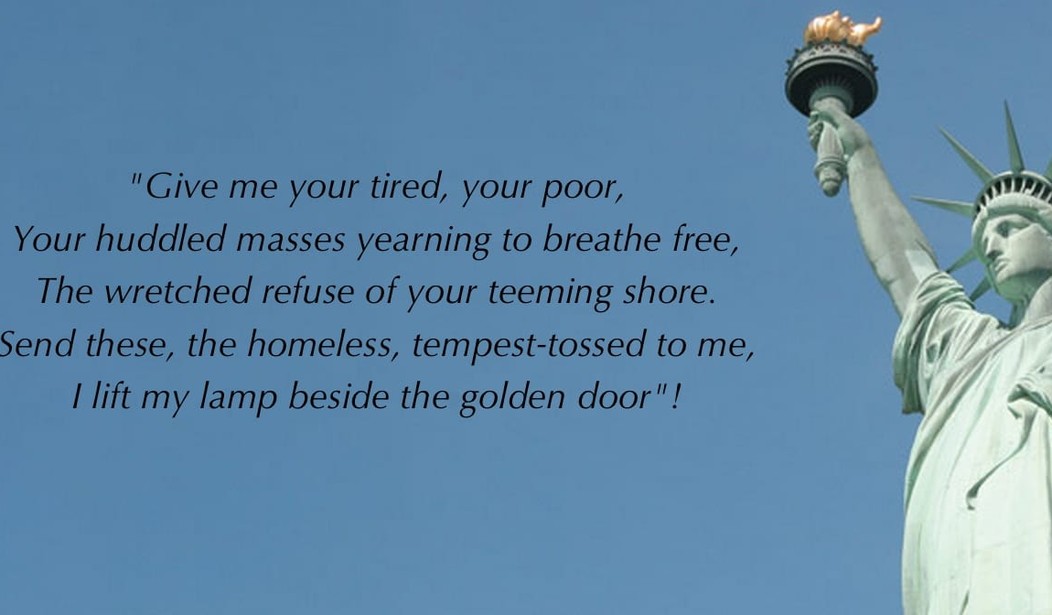I’m an immigrant. My mother, older brother, and I left Italy and arrived in New York City in June 1958. I was just under four years old. My father had come to America two years earlier to find work before calling us over. We all were legal immigrants, and all eventually became naturalized American citizens.
As a four-year-old, my worldview was limited to what I remembered of the old country and what I was experiencing in the new one. As the years went by, my old memories faded and were replaced with the experiences of living in the Italian and other European immigrant communities in Cleveland during the pre-Great Society era. These experiences included first-hand interactions with other immigrants of various nationalities, ethnicities, and cultures. This amalgamation of immigrants, before the modern progressive age, was at one time referred to as America’s “melting pot.”
And melt we did, whether it was in the work place or in the school room. At work, many of our parents’ factories, railroad yards, and construction sites were Centers of Babble, where having a job depended on getting along, even if you had no clue what the other guy was saying. At school, kids with blonde hair, blue eyes, and fair complexions played kickball with kids with dark hair, brown eyes, and olive complexions. Years later, it wouldn’t be kickball that brought them together but the prom.
To be sure, there were prejudices toward and between the European immigrants of different nationalities. My family and I experienced a number of anti-Italian rants that today would mistakenly be called racist. Nearly all of the insults had to do with belonging to the mafia, but there were also the occasional “wop,” “dago,” “guinea,” and “goomba” labels. Few, if any, of these experiences ever bothered me or left lasting negative impressions. Other nationalities, of course, had similar experiences.
The big-city ghettos European immigrants settled into may still exist physically today, but they mostly serve as quaint reminders of yesteryear in the form of “Little Italy,” “Germantown,” “Slavic Village,” and the like. Today, people visit these places mostly for the restaurants and delis, many still owned by the original families.
History shows that no advanced nation can exist solely on its native talent. However, because the Immigration and Nationality Act of 1965, also known as the Hart-Celler Act, abolished the system of national-origin quotas, it’s not surprising that countries such as India, China, and those from the Middle East, with a large supply of educated people but a low demand for their skills, became sources of high-technology labor. And poor countries, such as in Latin America, Africa, and parts of Asia, with a large supply of poor, unskilled workers and no jobs for them, became sources of many of our manual laborers.
For the most part, the “old” immigrants assimilated as best they could. They had to because there was no such thing as “Press Two for Polish,” or most of the other modern progressive melting pot obstacles. On my first kindergarten report card, my teacher wrote, “Antonio needs to hear and speak English at home.” My parents took that to heart, and insisted we speak English as much as possible. Although they had little formal education, they understood that speaking English was the first step toward success. Nearly all parents did the same.
The “new” immigrants may come from different parts of the world and may look different, but it would be wrong to say that new immigrants are different than the old immigrants in the fundamental reasons why they came to America. Immigrants haven’t changed, but our expectations of them have.
It became increasingly obvious, at least to the progressive intelligentsia, because of their disdain for Western and American cultures, and their anti-white bigotry, that a melting pot could never be achieved. And even if achieved, a melting pot society had the potential to engulf minority cultures. To combat this, liberals developed the “mosaic” concept of multiculturalism.
Left to itself, a mosaic country doesn’t necessarily prevent assimilation, but it doesn’t encourage it either. In modern America, the problem with the mosaic concept is that with the aid of liberal politicians and other progressive intelligentsia, tribal differences are emphasized, not minimized. Of all the possible outcomes of a set of scattered mosaic pieces, there are only a few that create a picture of a desired society, but there are countless combinations that produce a Balkanized society.
The best combination comes from conditions that drive the individual pieces toward a desired mutual end goal. This is an extremely difficult task, but it must be done. If nothing else, the free market is one of the best democratic forcing functions. However, unlike in the days of the melting pot concept, in which government, social institutions, and economic conditions encouraged assimilation, the result of nearly every government program and social institution since the Great Society has been to drive wedges between groups and to increase the number of people that could become wards of the state – intentionally or not.
America’s Balkanization has been aided by extensive corruption that has allowed exploitation of the very groups they were created to help. Senator Daniel Patrick Moynihan (D-NY), a trained sociologist, was an early critic of a number of these programs. Today, however, the civil rights movement has become a self-serving industrial complex.
Seeing all of this, what are new immigrants to think? They may have left sorry conditions at home to arrive in a country they thought was great, only to find out that the native intelligentsia hate this country so much that they actively claim American exceptionalism is a myth. Even more fundamentally, what if immigrants come to realize that Americans don’t even want to defend their own border?
What incentive is there for immigrants to assimilate? There is nothing encouraging them to do so. However, our biggest fear should not be whether a group wears a certain article of clothing or follows a dietary code; we’ve been through this before. The most important thing is whether they understand the rule of law and agree to the tenets of the U.S. Constitution; all else follows from that.
Modern immigration is not defined by countries of origin. Today’s broken immigration system is defined by programs hiding under the banner of good intentions, and managed by government ineptness and corruption that create political exploitation. Mosaicism enables tribalism, which is at the root of nearly all of man’s inhumanity toward his fellow man.
We have to wait and see what President-elect Trump’s actual immigration policy will be, but many erroneously argue that the solution to our immigration problem is to shut down our borders. Borders do need to be controlled against terrorists and other enemies, and immigration must be orderly, and in the best interests of the United States.
For a nation of immigrants, we don’t understand immigrants. Whether countries are major exporters or importers of labor depends on their supply and demand needs. America does need to fill jobs that Americans don’t want to do, or jobs that require specialized skills at numbers that cannot be met by our native population. These are facts that many Americans either don’t understand or don’t want to hear.









Join the conversation as a VIP Member